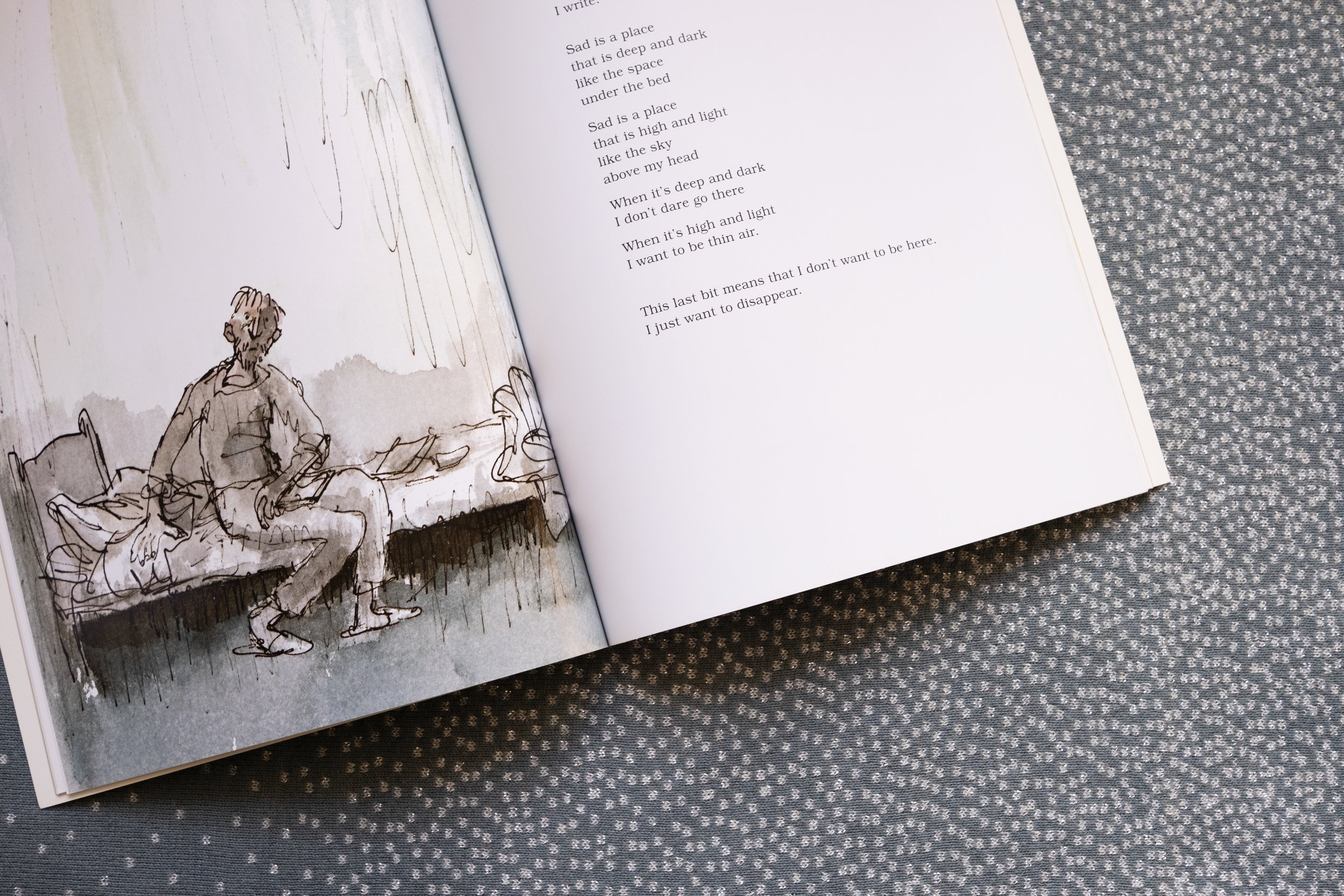
Michael Rosen’s Sad book
Start the session by asking the children what they already know about Michael Rosen and his poetry. They may know that he nearly died of Covid-19 and wrote about his experience. They may know that his son Eddie died. Explain that this book is about Michael’s experience of the grief he felt after Eddie’s death.
Prepare the children for the possibility that they may find similarities in Michael’s experience and their own. Read this book together pausing to allow space for discussion as you go. Be sure to explain that even though this book is about grief, it might also make us laugh!
support note:
By openly sharing his personal story, Michael speaks to grievers of all ages and covers many topics which can be explored in a safe and supportive environment with bereaved children in school.
These include:
how feeling sad can look and how we can sometimes hide our feelings so not to upset others
the emotions which can come with grief, e.g. anger
that sadness and grief can affect anyone, at any time
how grief makes changes to your life
coping strategies including talking to others, doing ‘crazy’ things, things that make you happy, writing
how our memories make us feel
Michael also touches on thoughts of suicide, “I just want to disappear.” Consider what support you might need if this topic is likely to arise during your discussion. It might be helpful to ask another adult from school to join your group, or to seek advice from childhood bereavement charities for guidance on how to navigate this sensitive topic with children.
Key Questions:
What does grief feel like?
What other emotions can it make you feel?
What can you do when you feel sad?
How does that help you?
Use these questions to guide your discussion around this book. Start with a discussion about the book - answering the questions as Michael would - and then discuss the children’s personal answers to the questions - learning from the book.

Activity: Decorating a picture frame
Turn to Quentin Blake’s final illustration in the book and ask the children what they see. Ask them what they think is in the picture frame Michael is looking at. It’s likely to be a photo of a happy memory of Eddie. Explain that they are going to decorate their own picture frame which they can take home to put a special photo in for themselves.
Blank photo frames can be bought in a craft shop or you can make them with strong cardboard. In this session, ask the children to decorate their photo frame with words, phrases and/or pictures of things that remind them of their special person who has died. You can use pens, paints, pencil crayons… glitter, stickers, pompoms, buttons… the list goes on!
During this activity encourage the children to share happy memories of their loved one who has died and explore how it feels to talk about these happy memories.
If your group needs more direction, ask them first select a paint colour that reminds them of their loved one and to paint their frame all over in this base colour. Ask them how the colour makes them feel and which memories they are thinking of. When the base layer of paint is dry, ask the children to add drawings of what their loved one liked or any hobbies they had, e.g. yoga, cats, motorcycles, books, footballs etc. Pens will give more detail to the drawings than paint.
Some children may want to write a poem instead of putting a photograph into the frame. Michael’s poem may inspire them to write about their feelings but they can equally write about a happy memory of being with their loved one. They might want to follow a structure similar to Michael’s but thinking about their happy memory. Look for patterns and repetitions used by Michael to inspire their own creative writing.
closing the session:
Ask each child if they would like to share their photo frame with the group and possibly the happy memories they were thinking whilst they were decorating it. They may have a photo in mind to put into the frame when they go home and would like to share that with the group. Hopefully, they felt good thinking about happy memories of their loved one during this session. Even though the person we love has died, we can still enjoy talking about them and sharing our memories of them with others. Emphasise with the children that it is important for them to do so.
Finally, plant a seed of thought… Michael used his gift for writing to think about (process) his strong feelings of grief after Eddie died. Have the children done anything similar? Perhaps they’ve written in a journal or drawn in a sketch book. It’s never too late to start and using a creative process is an incredibly powerful and successful way for people of all ages to process their grief. This discussion may encourage a bereaved child in your group to have a go, let them know that you are there if they would like to share it with you or to discuss the idea further.
